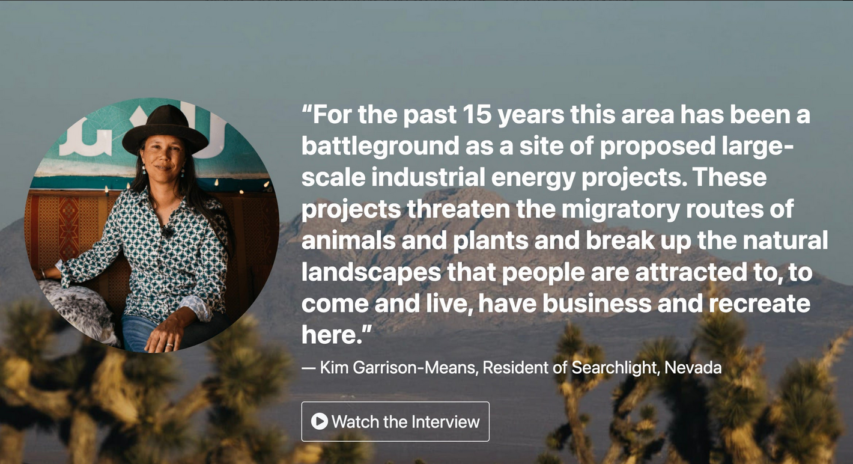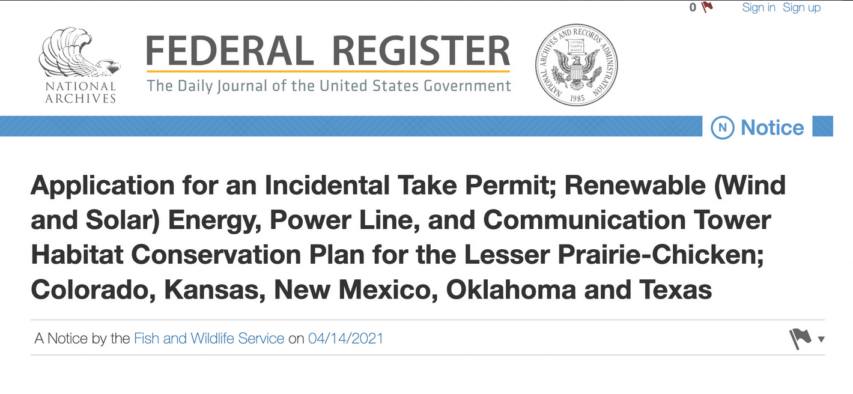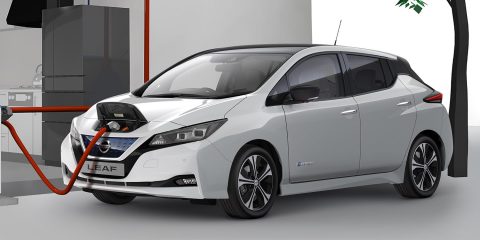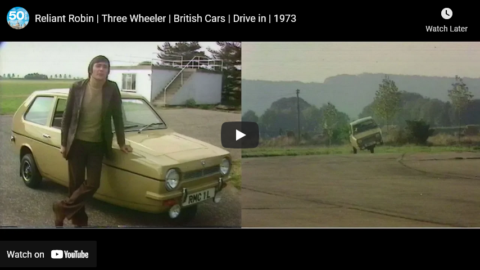Ruairidh MacVeigh
Published 5 Sept 2020This week, it’s back to cars, and today we look at the history of a motoring scandal that took place 10 years before DeLorean and his DMC-12, but followed nearly the same notes; a rushed design, shady business practices, an inexperienced workforce in an impoverished part of the world, etc.
The Bricklin SV-1 may have looked good on paper, but in reality it was a severely flawed design that was ahead of its time in many aspects, but highly primitive in others.
(more…)
June 25, 2023
Canada’s DeLorean – Bricklin SV-1
April 29, 2023
Justin can’t let Joe steal his thunder on this critical issue!
Justin Trudeau’s love of the vastly expensive and utterly useless virtue signal is almost unmatched among western leaders, but as Bruce Gudmundsson relates here, some of Joe Biden’s lower-echelon cronies in the Pentagram Pentagon have put up a virtue signal that will be very hard for Justin to top:
In the United States, the president enjoys the privilege of appointing 4,000 of his supporters to positions within the Executive Branch. When the president is a Democrat, the best connected of these invariably prefer perches in the vast social service bureaucracy, there to reign (but rarely rule) over like-minded civil servants.* Those with the fewest friends, alas, end up in the Pentagon.
I’m honestly surprised that the number of direct appointees is so low … I’d have guessed at least ten times that number. I was vaguely aware that the formal “spoils” system was broken up late in the 19th century, but the US federal government and its various arms-length agencies are several orders of magnitude larger than they were back then.
The appointees who suffer the latter fate know nothing of the work they supposedly supervise. Indeed, having been raised in homes in which there were “no war toys for Christmas”, they cannot distinguish a sailor from an airman, let alone explain the difference between a soldier and a Marine. What is worse, like impoverished Regency belles, obliged to spend the Season wearing last year’s frocks, Defense Department Democrats live in constant fear of losing caste.
With this in mind, it is not surprising that the aforementioned appointees embrace, with great enthusiasm, projects of the sort they can discuss at Georgetown cocktail parties. During the Obama years (2009-2017), many of these bore the brand of “green energy”. (No doubt, the appointees in question made much of the double entendre.) As might be expected, many of these programs went into hibernation during the presidency of Donald Trump (2017-2021), only to spring back to life after the inauguration (in 2021) of Joseph Biden.
In a recent post on his Substack, the indispensable Igor Chudov lays bare the folly of one of these initiatives. Part of the Climate Strategy unveiled by the US Army in 2022, this plan calls for the progressive replacement, over the course of twenty-eight years, of petroleum dependent cars, trucks, and tanks with their battery-powered counterparts.
I mean, on the plus side, it would mean that wars could only take place on sunny days (for solar-powered tanks) or windy days (for wind-powered tanks). The sheer stupidity of the notion would be laughable, except they really seem to be serious about military combat vehicles running on batteries recharged with solar cells, windmills, or unicorn farts. I’d call it peak Clown World, but it’s a safe bet that they can get even crazier without working up a sweat.
Searching for an appropriate graphic to go with this article, I found this gem at Iowa Climate Change from back in 2021:

Screencap from Iowa Climate Science, 14 Feb 2021
https://iowaclimate.org/2021/02/14/nato-chief-wonders-about-solar-powered-battle-tanks/
* Lest you think, Gentle Reader, that this post serves a partisan political purpose, I will mention that am convinced that the one Republican political appointee with whom I am well-acquainted is a knucklehead of the first order. Indeed, if I ever manage to locate the proper forms, I intend to nominate him for a place of particular honor in the Knucklehead Hall of Fame.
April 27, 2023
It’s not environmentalism I object to, it’s environmentalists
I thoroughly agree with Tom Knighton here:
I tend to be pretty critical of environmentalism. It’s not that I don’t value things like clean air, clean water, and pristine land free of pollution. I actually do value all of those things. I actually care about the environment.
What I don’t care about, though, are environmentalists.
Much of my issue with them is that they don’t seem to recognize reality or, if they do, they just want everyone to have to pay more and make do with less.
Most evironmentalists I’ve dealt with fail to understand one of the basic tenets of economics: There’s No Such Thing As A Free Lunch. Yes, we can make certain changes to how we do things to reduce our impact on the natural environment, but such changes are almost never free and sometimes the potential cost is significantly higher than any rational expectation of benefit from changing. Economics — and life in general — is all about the trade-offs. If you do X, you can’t do Y. If you specialize in this area, you can’t devote effort in that area, and so on. Time and materials limit what can be done and require a sensible way of deciding … and most environmentalists either don’t understand or refuse to accept this.
For example, take the electric cars that are being pushed so hard by environmentalists and their allies in the government. They’re not remotely ready to replace gas- or diesel-powered vehicles by any stretch of the imagination. They lack the range to really compete as things currently stand, and yet, what are we being pushed to buy?
Obviously, little of this is new. I wrote that post nearly two years ago and absolutely nothing has changed for either better or worse. Not on that front.
But there have been some changes, and they really show me why I’m glad I don’t describe myself as an environmentalist.
Actually, I take back a bit of my accusation that environmentalists don’t see the trade-offs: they do see some of them. They see things that you will have to give up to achieve their goals. That’s the kind of trade-off they’re eager to make.
Even if you don’t think climate change is real and manmade — I don’t, for example — I like the idea of clean, cheap sources of energy. Solar and wind aren’t going to produce all the electricity we need, but nuclear can.
Yet why do so many environmentalists focus on wind and solar? It can’t make what we need. It won’t replace coal power plants, especially with regard to reliability. Coal creates power when it’s overcast and when there’s no wind to speak of.
Nuclear can.
Nuclear, in fact, could create power on a fraction of the footprint, minimize pollution due to power creation, and do it safely. For all the fearmongering over nuclear power, there have been only two meltdowns in history — both of which were at facilities with reportedly abysmal safety records and one of which still needed a massive earthquake and tsunami to trigger it.
But wind and solar don’t just create “clean” energy. They also require Americans to make do with less.
That is the heart of the environmental movement. It’s not so much about saving the planet. If it’s not about a cult of personality, as Lights encountered, it’s about making people step backward in their standard of living.
April 13, 2023
Old and tired – “Conspiracy Theories”. The new hotness – “Coming Features”
Kim du Toit rounds up some not-at-all random bits of current events:
So Government — our own and furriners’ both — have all sorts of rules they wish to impose on us (and from here on I’m going to use “they” to describe them, just for reasons of brevity and laziness — but we all know who “they” are). Let’s start with one, pretty much picked at random.
They want to end sales of vehicles powered by internal combustion engines, and make us all switch to electric-powered ones. Leaving aside the fact that as far as the trucking industry is concerned, this can never happen no matter how massive the regulation, we all know that this is not going to happen (explanation, as if any were needed, is here). But to add to the idiocy, they have imposed all sorts of unrealistic, nonsensical and impossible deadline to all of this, because:
There isn’t enough electricity — and won’t be enough electricity, ever — to power their future of universal electric car usage. Why is that? Well, for one thing, they hate nuclear power (based on outdated 1970s-era fears), are closing existing ones and will not allow new ones to be built by dint of strangling environmental regulation (passed because of said 1970s-era fears). Then, to add to that, they have forced the existing electricity supply to become unstable by insisting on unreliable and variable generation sources such as solar and wind power. Of course, existing fuel sources such as oil. coal and natural gas are also being phased out because they are “dirty” (they aren’t, in the case of natgas, and as far as oil and coal are concerned, much much less so than in decades past) — but as with nuclear power, the rules are being drawn up as though old technologies are still being used (they aren’t, except in the Third World / China — which is another whole essay in itself). And if people want to generate their own electricity? Silly rabbits: US Agency Advances New Rule Targeting Portable Gas-Powered Generators. (It’s a poxy paywall, but the headline says it all, really.)
So how is this
pixie dust“new” electricity to be stored? Why, in batteries, of course — to be specific, in lithium batteries which are so far the most efficient storage medium. The only problem, of course, is that lithium needs to be mined (a really dirty industry) and even assuming there are vast reserves of lithium, the number of batteries needed to power a universe of cars is exponentially larger than the small number of batteries available — but that means MOAR MINING which means MOAR DIRTY. And given how dirty mining is, that would be a problem, yes?No. Because — wait for it — they will limit lithium mining, also by regulation, by enforcing recycling (where have we heard this before?) and by reducing battery size.
Now take all the above into consideration, and see where this is going. Reduced power supply, reduced power consumption, reduced fuel supply: a tightening spiral, which leads to my final question:
JUST HOW DO THEY THINK THIS IS ALL GOING TO END?
If there’s one thing we know, it’s that increased pressure without escape mechanisms will eventually cause explosion. It’s true in physics, it’s true in nature and it’s true, lest we forget, in humanity.
Of course, as friend-of-the-blog Severian often points out, these people think Twitter is real life. Of course there’ll be enough pixie dust to sprinkle over all their preferred solutions to make them come true. Reality is just a social construct — they learned that in college, and believe it wholeheartedly.
March 22, 2023
California – Embrace the Unicorn! No, the other Unicorn!
Chris Bray on California’s hoped-for path to transition away from fossil fuels:
California has the progressive vision to go all-electric, with laws and regulations that phase out gas water heaters, furnaces, and cars in the near future — while transitioning away from the production of electricity through the use of nuclear and natural gas technologies. Putting the teensy-weensy engineering questions aside and embracing the unicorn, this deep blue vision of the future means the state needs to build wind and solar power facilities in massive quantities, and now. California currently has about half the power it needs to do what it says it plans to do in just ten years.
But President Joe Biden just announced a move that aggressively advances the progressive vision of preserving wilderness and preventing development, naming the Avi Kwa Ame National Monument in the Mojave Desert — preventing solar and wind development on 506,814 acres of lightly populated and federally owned desert land. The coalition of tribal and community groups that has worked to get the national monument designated make the anti-solar point explicit on their website:
Where progressive coastal urbanites see the progressive project of decarbonization, people in wilderness-adjacent areas see industrial blight, and express that view in the language of progressive conservationism. To a degree not explored by the false binary of media-defined American politics, in which good people on the left face bad people on the right, California’s future is an increasingly sharp conflict between left and left — and note what kind of permits energy companies have to get to build big wind and solar plants in the desert:
When progressive California builds its progressive energy infrastructure, it’s going to incidentally take a shit-ton of bighorns and tortoises and birds. I assume I don’t have to explain the euphemism.
March 21, 2023
The reason there are no EV charging facilities along the Interstate Highway System
Jon Miltimore explains why a 1956 law prohibits the installation of EV charging bays anywhere on the Interstate:
In 1956, Ike signed into law a bill — the Federal-Aid Highway Act — that paved the way (pun intended) for the interstate highway system, which included rest areas at convenient locations.
While there were numerous problems with the legislation, a relatively minor one was that it created strict limits on what could be sold at these rest stops. Today, federal law limits commercial sales to only a few items (including lottery tickets), the Verify team found. When President Joe Biden rolled out a $5 billion funding plan for states to create EV charging stations, he neglected to carve out a commercial exemption for EVs.
“You would be paying for that energy”, Natalie Dale of the Georgia Department of Transportation told WXIA-TV Atlanta. “That would count as commercialized use of the right-of-way and therefore not allowed under current federal regulations.”
If you think this sounds like an inauspicious roll out to the massive federal EV program, you’re not wrong.
Allowing drivers to charge their EVs at convenient, familiar locations that already exist along interstate highways is a no-brainer — yet this simple idea eluded lawmakers in Washington, DC.
Unfortunately, it illustrates a much larger problem with the top-down blueprint central planners are using to create their EV charging station network.
“We have approved plans for all 50 States, Puerto Rico and the District of Columbia to help ensure that Americans in every part of the country … can be positioned to unlock the savings and benefits of electric vehicles”, Transportation Secretary Pete Buttigieg said in a 2022 statement.
While it’s good the DOT isn’t trying to single-handedly map out the locations of thousands of EV charging stations across the country, there’s little reason to believe that state bureaucrats will be much more efficient. A review of state plans reveals a labyrinth of rules, regulations, and stakeholders dictating everything from the maximum distance of EV stations from highways and interstates to the types of charging equipment stations can use to the types of power capabilities charging stations must have.
The primary reason drivers enjoy the great convenience of gasoline stations across the country — there are some 145,000 of them today — is that they rely on market forces, not central planning. Each year hundreds of new filling stations are created, not because a bureaucrat identified the right location but because an entrepreneur saw an opportunity for profit.
January 23, 2023
Jeremy Clarkson and “the swamp of arrogant prejudice and self-gratification which sits at the bottom of the brain”
Nicholas Harris recounts the story of Jeremy Clarkson’s steady rise and sudden recent fall after a crude reference to someone or other in a newspaper article:
“Ask Clarkson. Clarkson knows — people like fast cars, they like females with big boobies, and they don’t want the Euro, and that’s all there is to it.” This surmise, from Peep Show, captures the essence of Jeremy Clarkson’s Noughties appeal — approvingly for those who liked him, and scandalously for those who didn’t. The spawn and spokesman of the English male id. Insular, impudent and straightforward in taste. And if that weren’t enough, he was also into cigs, engines and the Second World War.
For the minority of a more severe, moralistic, and joyless disposition, this made him a national-psychological defect to be suppressed, or ideally exposed and exorcised. Before Piers Morgan, Nigel Farage or Donald Trump provided such stern competition, it was a small badge of honour on the Left to publicly hate Clarkson. But for many of us (probably a majority at his peak) he was a vulgar treat to indulge. For the length of a Sunday column or an episode of Top Gear, we could wallow harmlessly in the swamp of arrogant prejudice and self-gratification which sits at the bottom of the brain. At a time of minimal collective loyalty, the nation could reliably divide into those two tribes. Clarkson the monster, or Clarkson the geezer. Wokery vs blokery. A version of the same split is fuelling the current Clarkson row, but with the weight of opinion reversed.
[…]
But his spiritual and popular appointment to the English is a far tougher thing to dismiss. He is, like it or not, quite a lot of us writ ludicrously, satirically large. Like a 21st-century John Bull: to paraphrase Auden, a self-confident, swaggering bully of meaty neck and clumsy jest. Whatever Clarkson’s professional fate, the question of whether our society can tolerate him has implications for the stomach and sensibility of the national character, of which he is a significant avatar and champion. And his rise and fall reads as a history of a changing English firmament, one in which public morality has come to supersede mere entertainment.
Plenty of time and work went into the germination of such a figure. Clarkson’s early life is a whistle-stop tour of the English class system. He was born rural, lower-middle class, Yorkshire. But, in a wonderful twist of fate, the Clarkson family came into money after his parents won the exclusive rights to sell Paddington Bear dolls, based on the ones they had made for him and his sister. With aspirational intent, Clarkson was sent to Repton, one of the North’s oldest private schools. There, he smoked, pranked and failed his way to expulsion, developing the likeable loutishness which is his career mainstay. And then he jumped social tracks again, entering the lowest rungs of the Fourth Estate at the Rotherham Advertiser.
A public schoolboy who can still boast that he crashed out of education with a C and two Us at A Level. The ingredients were in place for a broad, classless appeal. But Clarkson really came of professional age in the new meritocracy of Thatcher and Murdoch, a place where common touch came to supersede common background (something also exploited by Boris Johnson and Nigel Farage). It was an England of quick, coarse wit, and quicker, coarser money; of the triumphant red-top, and the unrepentant “lad”. It suited Clarkson perfectly. Flush with entrepreneurial spirit, in Eighties London he had the wheeze of syndicating car news and reviews from his own company to the regional press. It was a money-maker which introduced him to motoring journalism and eventually to the producers of Top Gear.
January 8, 2023
QotD: Unintended consequences, fuel economy division
It’s a claim that you encounter a lot — an insult really — that people are buying bigger and bigger trucks to compensate for … something. Here’s one particularly cringeworthy example, because the person making it doesn’t seem to realize the go-kart he’s praising doesn’t meet US emissions standards.
whenever americans say that they *need* a massive pickup truck that gets 12mpg just show them the Subaru Sambar
utility vs. ego pic.twitter.com/NqexDbQcok
— sam (@sam_d_1995) May 11, 2022In response, a lot of people will defend their big truck purchase by saying they need a larger vehicle for their family, their business, or just because they like it. And to an extent, market forces are partly responsible for the increase in truck sizes, particularly when it comes to features like crew cabs. But it turns out that even a lot of people who like the big trucks don’t know the full story of how their trucks got so big.
The rest of the story is something the folks at Freakanomics might enjoy because it is a classic tale of unintended consequences. In brief, Obama-era fuel regulations incentivized automakers to build bigger trucks.
One particular goal of the Obama Administration was to increase fuel efficiency through the typical political process: telling someone else to do it. To that end, the DOT and the EPA handed down a series of standards that nearly doubled the miles-per-gallon requirements for cars and light trucks.
The administration praised their own new standards as “groundbreaking”. Transportation Secretary Ray LaHood predicted that the program would “result in vehicles that use less gas, travel farther, and provide more efficiency for consumers than ever before”.
The intent was to put pressure on automakers and force them to work out the engineering to meet the tough new standards. Their blindspot was failing to recognize that by placing the regulations solely on cars and small trucks, they had created a much simpler solution.
The new platform-based standards set fuel economy targets based on wheelbase and tread width, that is, how far apart the wheels are. If your vehicle is longer and wider, the fuel-economy targets shrinks. In the words of Dan Edmunds of Edmunds.com, “There was kind of an incentive to maybe stretch the wheelbase a couple of inches and set the tires maybe an inch [farther] apart, because you get a bigger platform and slightly smaller target.”
The regulations meant to get better mileage out of vehicles also made it easier for larger vehicles to meet fuel-efficiency standards. In what should have been an unsurprising move, when faced with the choice between reengineering their vehicles or simply going bigger, automakers chose to go bigger.
AndToddSaid, “The Real Reason Why Are Trucks Getting Bigger”, Todd’s Mischief blog, 2022-05-13.
December 14, 2022
Our Nuclear Alternate Future?
Big Car
Published 9 Apr 2021In the 1950s, as the Cold War was heating up and children were being urged to “duck and cover” from nuclear weapons, car companies seriously proposed powering their cars using lead-lined nuclear reactors. It seems like madness today, but while the world saw the threat of nuclear war, they also saw the seemingly limitless potential from nuclear power. Just how were these vehicles supposed to work and how far did they get to reality?
(more…)
November 23, 2022
Morris – A Minor Documentary
mglmedia
Published 28 Feb 2014The Morris Minor is a classic British car which has been given another lease of life by a new generation of young drivers. Join us on a journey from its humble beginnings to its current adventures on British roads with interviews with Mike Barson (Madness) Zac Ware (Charles Ware & The Proclaimers) Martin Wainwright (Author/Journalist) and a host of Morris Minor owners.
September 10, 2022
The Land Rover Defender Story
Big Car
Published 27 Dec 2019The Land Rover is Britain’s bullet-proof off-roader born out of Rover’s post-war desperation and became the indispensable go-anywhere vehicle. Like its famed bullet-proof ruggedness, Land Rover production kept going, and going, and going. But with a brief gap of 4 years, the Land Rover is still with us and looks like it’s not going away any time soon.
(more…)
August 19, 2022
The DeLorean Story
Big Car
Published 5 Jan 2020There’s much more to the DeLorean Motor Company than Doc’s 88mph time machine in Back to the Future. It’s a story of a playboy founder with a meteoric rise, a story of hope and regeneration in an area torn apart after a decade of fighting, and of a cocaine smuggling fall from grace. Yes, this story has it all!
(more…)
February 4, 2022
QotD: Don’t drive on the interstate highways
Almost without exception, the scenery [along the highway] is terrible (writer Bill Bryson suggests that beautiful scenery along the interstate highway system is in fact banned by federal law), the distances are astonishing (except in New England), the highways around major cities (e.g. Washington D.C., Seattle, Los Angeles and even Dallas are more like (slow-) moving parking lots than highways, and the plethora of 18-wheeler trucks make driving a white-knuckle exercise. You will never find any decent food just off the interstates unless your idea of “interesting” is McDonalds or Waffle House, and in a word, interstate highway travel is BORING.
Kim du Toit, “Don’t Do That”, Splendid Isolation, 2019-01-28.
January 27, 2022
QotD: American cars after 1970
If you weren’t there, I don’t think I can adequately convey to you just how bad American products were back in the Seventies and Eighties.
Especially cars. American-made cars were almost Soviet, in that if you happened to get one made by the one factory the one day the workers weren’t falling down drunk on the job, it might run … for a while. American workers weren’t drunk, of course, but they were unionized, which from a quality control perspective amounted to the same thing. Chrysler and especially General Motors were little more than employee pension plans that occasionally cranked out a crappy car. Not to take anything away from underhanded Japanese business practices back then — “dumping” etc. — but you had to give the Nips this, their shitboxes actually worked.
Even ten-thumbs guys like me became at least semi-adequate shade tree mechanics, because we had to keep the Sixties hand-me-down cars that got us through college running well into the 1990s, or we’d have to walk. No one in his right mind bought an American-made car from any year after 1970. Take that out for any large consumer product, and there you had it. Thanks, Big Labor!
But here in Clown World, the dilithium crystals have reversed polarity, so what was already fake and gay back at the very dawn of the Fake and Gay Era (future historians, please credit me for that coinage in your textbooks) is now a pillar of probity. The enemy of my enemy is my friend, and Big Labor is definitely shaping up to be the enemy of Big Government. Brandon’s puppetmasters have clearly decided to go for the quadruple axel, politically — they’re going to totally alienate every single cisgender, heteronormative member of their old coalition, so that when they finally make Utopia with just Intersectional Genderfluids of Color, even the French judge will be forced to give them a 10.
It’s a bold strategy, Cotton … let’s see how it works out for them. In the meantime, yeah, if you’ve got a tradesmen’s local in your area, buy ’em a box of donuts or something. They’re fighting the good fight on this one.
Severian, “Friday, No Job, Etc.”, Founding Questions, 2021-10-22.
January 26, 2022
Reliant Robin Three Wheeler | British Cars | Drive in (1973)
ThamesTv
Published 21 Jul 2019Tony Bastable takes the iconic Reliant Robin for a spin to see what this new British car has to offer.
First shown: 29/10/1973
If you would like to license a clip from this video please e mail:
archive@fremantle.com
Quote: VT8219
From the comments:
Tortinwall
2 years ago
I love the idea that you buy a Reliant Robin and then keep “valuable objects” in the boot.










